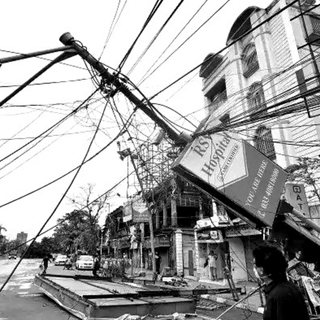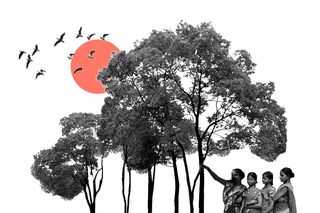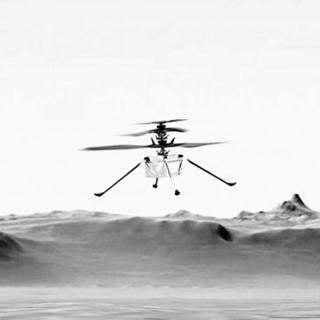
Forming a Connection With Nature Is Key To Protecting It. Can Citizen Science Initiatives Lead the Way?
As the ecological landscape deteriorates, an informed public can facilitate good governance around environmental policies.

A recent environmental conservation project makes use of a unique and fascinating tactic to involve citizens: a field guide listing nearly 300 species of marine animals found on beaches of the Chennai coast. This guide, compiled by activist Yuvan Aves and his team of members from the Madras Naturalists’ Society, was launched oniNaturalist with the aim of helping people who are interested in shore walks to identify species accurately and learn about their ecological importance.
“To name a thing is to love it,” says Yuvan. This is one of the main reasons that he started the field guide — he believes that it is important for people to know what they are looking at in order to form a relationship with it. This relationship and a sense of belonging, he argues, is what makes anyone fall in love with a place and take on the responsibility of protecting it. The connection forms the bedrock of any sustainability movement. This can be seen, repeatedly and world-over, when people come together to protest infrastructural developments on their land.
The illegal port proposed by the Adani group in Pulicat is an important example here. Local fisherfolk and activists have contested the project fiercely, as the ecological ramifications of building a port in this location include complete and irretrievable loss of this unique habitat. Pulicat Lake, the water body adjacent to the plan, is the second-largest brackish water lake in India. It is home to the Pulicat Bird Sanctuary, and its most famous barrier island is Sriharikota. Apart from being a breeding ground for flamingos, as well as countless other bird species, it also supports at least 50,000 artisanal fisherfolk. Over the past several months, Yuvan has been traveling the coast of Tamil Nadu collecting stories — stories of traditional fishing practices, of coastal erosion, of stewardship of the environs, of activism, and of the deep relationships people foster with landscapes and seascapes.
These stories are the bricks with which activism and conservation are built. Narratives such as these, on many levels, personalize an abstract problem like coastal erosion or climate change and give an immediate perspective that makes it relatable.
*
As I write this in Pondicherry, with the sea just a few klicks from where I am, I cannot help but feel immense awe at the magnitude of Yuvan’s work documenting the coastal threats of a state as big as Tamil Nadu. The state boasts a coastline that is 1076 km long, with 13 districts, and 15 major ports and harbors, as well as lakes, estuaries, and sandy beaches.
Related on The Swaddle:
Eco‑Anxiety Is Fueled by Helplessness, Anger. Can We Turn Our Grief Into Climate Action?
Yuvan Aves has been involved in coastal conservation since 2015 and approaches it in a multi-pronged manner — combining activism, writing, education, and outreach in his endeavors. His Instagram page is a treasure trove that is both poetic as well as scientifically accurate. Ultimately, to be involved with a landscape is precisely that — approaching it with scientific vigor but being open to letting the beauty of something affect you deeply.
Attempts like Yuvan’s to involve people in loving and fighting for their landscapes are crucial in affecting real-world change — informed and involved citizenry eventually leads to good governance. Campaign manifestos of almost all political parties in recent regional elections were officially against the port. As of now, the public hearing against carrying on the project, originally scheduled for January 22, has been delayed due to the fervent campaigning and public outrage. There is hope that the building of the port will be stayed permanently.
There are several such examples of campaigns against mega-development projects driven by social media and concerned citizens. Save Aarey, a community-led campaign, resulted in saving Mumbai’s ecologically rich Aarey forest from the metro development project. This also spurred several other similar campaigns, such as the My Mollem initiative, which mobilized citizens across Goa to protest deforestation. The ongoing campaigns against the Etalin project in Dibang Valle and the Umngot river campaign in Meghalaya are two more examples. The protests against the draft Environmental Impact Assessment — which was riddled with issues related to direct ecological consequences — are perhaps the most significant here. Citizen-led social media initiatives resulted in lakhs of responses from the public, which the government is currently assessing.
All of these campaigns have organized and sprung up in barely a year, in the middle of a global pandemic. They garnered massive support and were led by students, locals, and netizens. They were successful because the campaigns not only explained the issues clearly but also forged a connection between the landscape and people. The campaigns led people to care.
Rallying a high level of support against development projects involves mobilizing huge groups of people, and a large part of this is due to the efforts of an informed citizenry; a spirit of cognizance can only be created when people care enough for their surroundings and see themselves as stakeholders. This is the primary reason why citizen science is not just a tool for education, but an important weapon in the arsenal to express dissent.
So, the next time you take a walk and you spot a shell, or an unfamiliar bird, or even a tree in your neighborhood, look it up and learn what it is. Form a relationship with the living creatures in your vicinity, because it is important for all of us to know that ecological niches are rich with life that barely catches our attention. Unless we learn to care about the little stuff, the gravitas of the big stuff will escape our notice. Within this rapidly deteriorating ecological landscape, rife with environmental injustice, it all starts with knowing what’s in our figurative backyard.
Akhila Vijayaraghavan is a hydroponic farmer, powerlifter, diver, and writer. Trained as a molecular biologist at the University of Glasgow, she has worked in environmental strategy, advising companies on ESG and waste management. Now she runs an urban hydroponic farm focused on agritech innovations. Follow her on Twitter: @aksvi or Instagram: @thebokehchaser.
Related


NASA Remotely Operates the First Helicopter Flight on Mars
